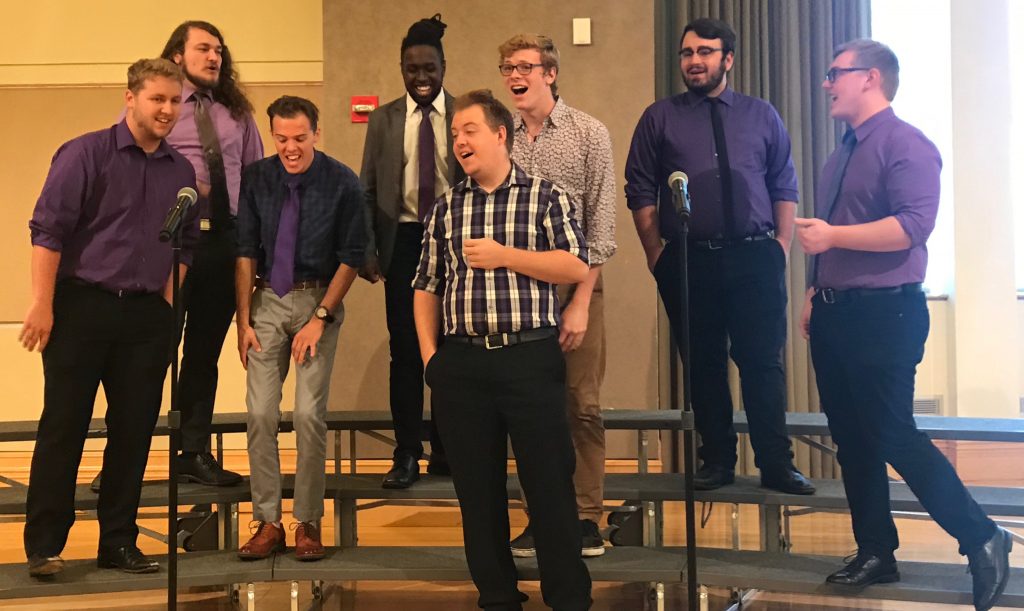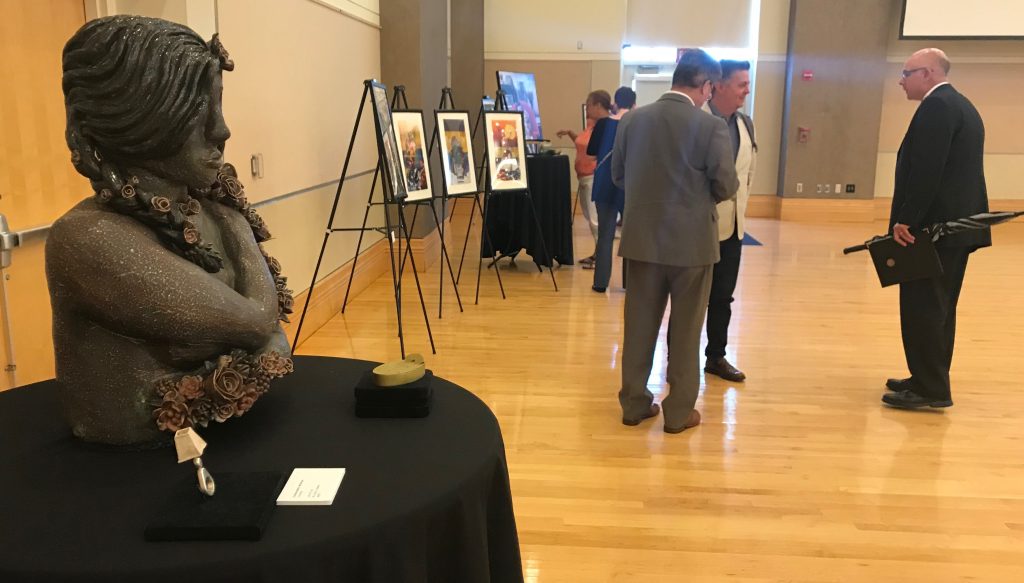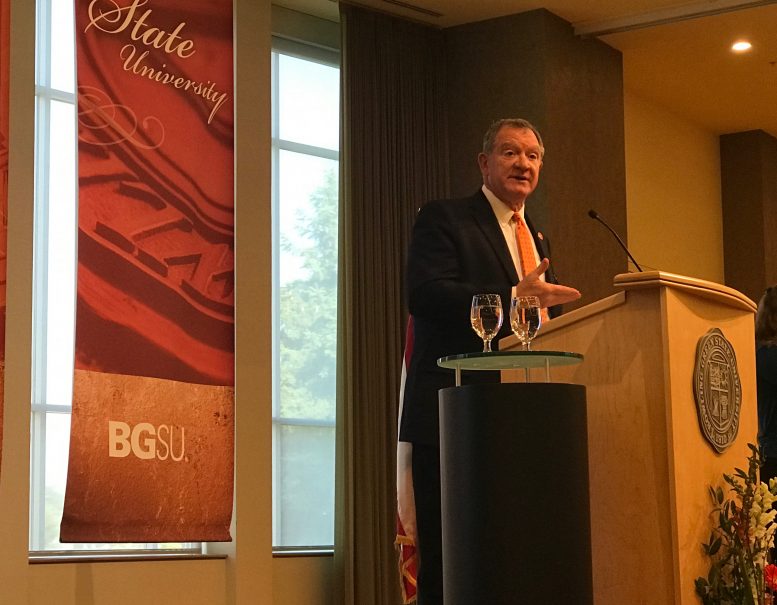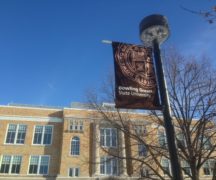By DAVID DUPONT
BG Independent News
Bowling Green State University President Rodney Rogers had plenty to tout in State of the University speech Wednesday morning.
Just in was a Wall Street Journal-Times Higher Education college ranking that placed BGSU as number 3 in the country for the quality of its teaching. And when BGSU graduates were asked if they’d still choose BGSU if they had it t do all over again ‘they overwhelmingly said ‘yes,’” Rogers reported. So overwhelmingly, BGSU was top among its peers.
Rogers traced that success back even further to tell the story of Shantanu Narayen who came to BGSU from his native India in 1983 to study in the university’s pioneering computer science program. He’s now president and CEO of Adobe.
BGSU isn’t done innovating.
Rogers announced that three areas of research — photochemical science, environmental health and water quality, and social demography — will be the university’s “key research pillars.”
BGSU welcomed 5 percent more students this year, bucking the trend of declining student enrollment.
“Our enrollment is at its best in nearly a decade,” he said.
Maintaining that in the face of a reduction in the traditional college age population is one of the challenges confronting the university.
“While we have had many successes, we must also own that the challenges we face in higher education are the greatest in our lifetime,” Rogers said.
This is a momentous period for higher education — akin to the creation of land grant institutions in the mid-19h century and the influx of World War II veterans through the G.I. Bill. It differs in one crucial way. Those periods saw an influx of resources into the higher education. “Today we must rely on creativity and courage in our convictions,” Rogers said.
He asserted that though BGSU serves post-traditional students through Firelands, online programs and professional graduate degrees, traditional students are still at the heart of BGSU’s mission.
“It is incumbent upon us to redefine student success, leveraging our strength as a full-time, residential campus,” Rogers said.
“Our focus must be to prepare each student to have the ability to build 21st century success skills, content knowledge and apply those to real and messy issues — that is where real learning occurs.”
As part of this, Rogers announced an initiative to overhaul the advising and mentoring system.
Rogers asked: “What if we began to intentionally organize all these support programs with a framework that can serve students in their college experience and beyond?”

This would do away with traditional academic advisors, though faculty would still mentor students in the classroom. Instead mentors and guides would take a broader, more holistic approach to helping students, integrating career and academic advising.
After his address, he said that the goal will be to have the new system implemented within 18 months.
This will, he said, help retain more students — about 77 percent of first year students return for their sophomore year currently.
Also, if done well, it will set BGSU apart, and that he hopes will lead to more students choosing BGSU.
Recruiting a diverse student body needs to remain central to the university’s enrollment strategy, Rogers said. Diversity maintain a vibrant campus climate and reflects the world “that students will thrive in.”
Beyond recruiting a diverse faculty, staff and students, the university must make sure they feel they belong.
He noted “the stark divide” in success rates between students of color and white students. That, he said, was not acceptable.
Afterward, Rogers said that the university can continue to recruit academic high achievers along with bringing in students of color.
He cited the Thompson Scholars program, funded by Bob and Ellen Bowen Thompson, as a key element in doing this.
The program provides financial support for low income students, many of whom are students of color. With the Thompsons’ most recent gift, they now support almost 500 scholarships.
In addressing the cost of education, Rogers said that BGSU should reduce the number of credits needed to graduate to 120 — it is now 122.
Afterward he said that the state standard is 120. Because of accreditation requirements some programs do require more credits, but Rogers feels some reductions can be made even in those areas.
In closing Rogers urged “all of us, especially our faculty and staff, come together this year to take action, to collaborate and innovate, because that is what each of our students deserve, that is what the public deserves and that is what it means to create public good.”

That, he said, will insure that BGSU thrives, and builds on its legacy. “The next chapter is ours to write.”





